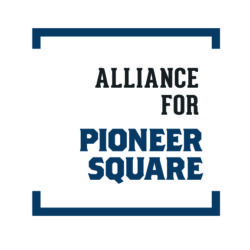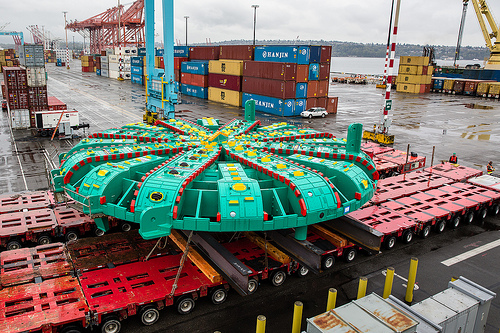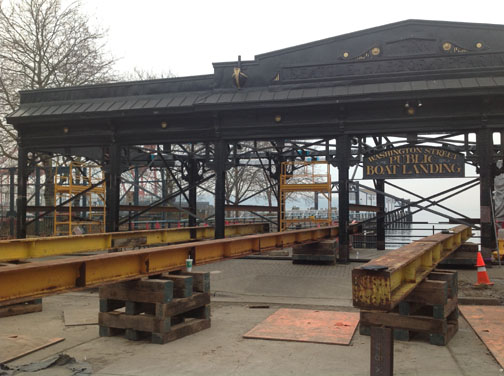
The Washington Street Boat Landing pergola is in the process of being removed, protected, and restored in anticipation of the Elliott Bay Seawall project. The move is slated for Sunday, February 9th and Monday, February 10th.
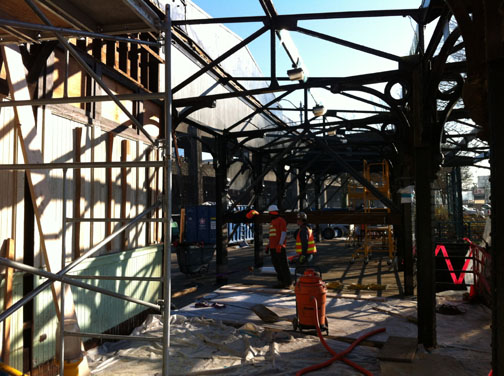
The historic boat landing’s iron shelter was built in 1920, and is one of three pergolas in Pioneer Square. The Pioneer Square Preservation Board gave its Certificate of Approval to move the structure to a storage site on Terminal 25, thereby ensuring its safety during construction. After the Seawall Project is completed, the pergola will be moved back to its original site and will be restored. Overseeing the project is the Seattle Department of Transportation (SDOT) under Section 106 MOA agreements.
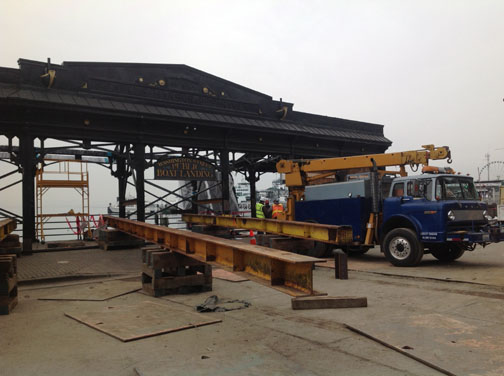
From supervising project manager, Jessica Murphy, PE with SDOT: “Preparations for the relocation have been ongoing since early January 2014. Bracing of pergola walls, removal of the roof, lead abatement and other preparatory work has been performed under the oversight of Ron Wright, our architectural specialist. We are now in the final stages of preparation for the structure relocation to a site at Terminal 25. The move will happen in two steps: 1) The move eastward off the current pier structure, and 2) The final move south to Terminal 25.”
Steps have been taken to ensure restoration of the pergola will be historically accurate. Under the Section 106 MOA rules, a rigorous documenting process has been put in place and organizers are actively photographing and video recording every part of the structure that is removed.
This move and plans for restoration could not have come any sooner! In September 2012, the Alliance for Pioneer Square contacted SDOT about signs of deterioration on the historic boat landing. We look forward to see it renewed on a world class waterfront in the near future.

